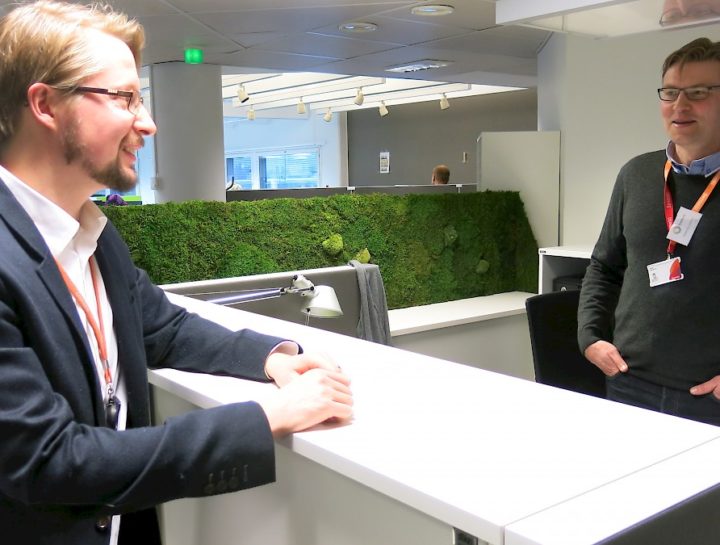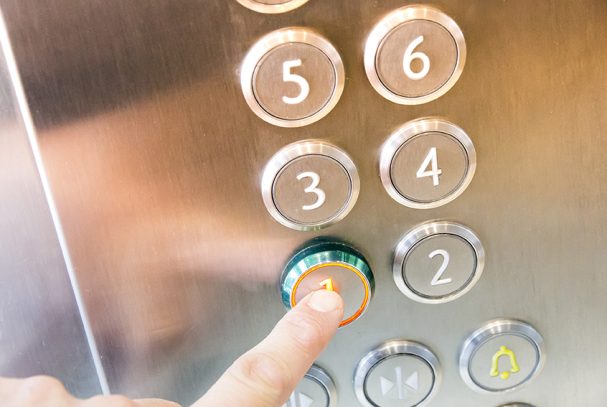Senaatti has taken a pioneering role in Finnish property management by setting out to systematically improve indoor climate management in its properties using information technology and building information modelling. The background to this objective is research indicating the positive effect of optimised indoor climate management on productivity.
”In Finland, property maintenance has focused almost entirely on energy efficiency in recent years. This is still important but indoor climate management is much more important,” says Pasi Pipatti, a Specialist in Workplace and Maintenance Services at Senaatti.
Opportunities for improving indoor climate management using information technology have existed for some time now. Heikki Ihasalo, Granlund’s Senior Consultant, who completed his doctorate in automation technology three years ago, says that nobody was exploiting indoor climate management data in the early phases even though there was evidence of its usefulness.
”An organisation of Senaatti’s size was needed to take the first step. This is about exploiting big data in maintenance operations – no more and no less,” Ihasalo says.
Ihasalo says that future objectives include integrating building information models into indoor climate monitoring and customer service during maintenance.
”Senaatti has piloted a building information model known as a virtual property on a few of its sites,” Ihasalo says.
Suitable for all properties
Senaatti has properties all over Finland and they are used for purposes varying from government agency offices to performing arts and border control. To enable such a diverse, geographically dispersed stock of buildings to be analysed consistently, the building automation in the properties must be equipped with a comprehensive range of sensors and kept up to date.
”Properties can and should be monitored remotely. The Metrix software is an essential tool for remote monitoring. It is also important that local organisations be provided with expert help with property management,” Heikki Ihasalo says.
Pasi Pipatti highlights the fact that the consistent monitoring and control of Senaatti’s properties enabled by Metrix does not detract from the users’ individual wishes.
”Indoor climate can be monitored and regulated – in some cases, with settings affecting individual workstations. Normally, users are able to change room temperatures by a few degrees,” Pipatti states.
Throughout the 200-year history of Senaatti and the organisations that preceded it, very different types of building have been added to the property portfolio. There are also major differences between their automation systems. This is no problem for Metrix, as the system can collect data from any modern automation system.
”The measurement data that is collected – and the big data that is thereby accrued – can be broken down into such small parts that it can be put to use in management systems and when considering property investments,” Heikki Ihasalo promises.
Millions of measurements
In physical terms, there are some basic variables: temperature, carbon dioxide concentration, humidity and ventilation pressure gradients. Senaatti currently has about 60 Metrix sites, which record a million measurement observations in the space of a day, so it must be possible to analyse this data efficiently.
”We are approaching the matter from a new angle to get an understanding of which things are not working as they should be. Instead of making the software produce an endless stream of measurement readings for users, it primarily draws the user’s attention to matters such as the number of automation alerts,” says Heikki Ihasalo.
Although indoor climate management is the most noteworthy and perhaps most significant part of the Metrix application, the software is also highly suitable for optimising energy efficiency. This also addresses one of Senaatti’s key property maintenance objectives, which will continue to include boosting energy efficiency.
”This big data project has made it easier to identify the factors affecting energy use. As such, we can react to abnormal consumption and intervene more effectively,” Pasi Pipatti says.
The big data project is also a natural continuation of the energy savings that have been implemented by Senaatti-kiinteistöt for several years now. Big data is an important addition to measurements of energy consumption.
Picture and text: Vesa Tompuri




